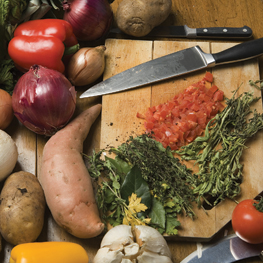
Spending more time indoors means kids, and adults, are exposed to more pesky germs, viruses and bacteria. Getting sufficient sleep, staying hydrated and active are important to maintaining good health over the winter months, but making small dietary changes can help prevent winter colds and keep your family healthy all year long.
Stock up on immune-boosting foods
While a balanced diet is important to maintaining good health, Calgary nutritionist Kylie Fitzpatrick says there are some nutrients that play a key role in strengthening our immune system:
Vitamin C. Found in citrus fruits and most vegetables, this antioxidant helps protect the cells and is well-known for its ability to stop a cold in its tracks, or at least shorten its duration.
Zinc. If your mother ever gave you zinc lozenges when you were sick, you know zinc is important for your health. Fortunately, those awful-tasting lozenges aren’t the only source of this immune-boosting mineral. Zinc is also found in seafood, meat, spinach, nuts, beans and dark chocolate.
Vitamin A. Found in orange vegetables such as squash, carrots and sweet potatoes, vitamin A helps prevent germs and bacteria from getting into your system.
Allicin. “White vegetables such as onions and garlic are super good for prevention and treatment of colds,” says Fitzpatrick. These potent vegetables contain allicin, which slows down and kills viruses and bacteria.
Fibre. Since 80 per cent of your immune system is located in the gut, keeping your intestines healthy is the easiest way to build immunity. Stock up on fibre-rich fruits and vegetables, such as apples and sweet potatoes, and Greek yogurt for probiotics.
Trick kids into loving vegetables
Do your kids run screaming from the vegetable aisle? Teaching kids to love nutrient-rich vegetables may take some creativity.
Fitzpatrick offers her best solutions for transforming nutrient-dense winter vegetables from yucky to yummy:
Hide nutrition. One of Fizpatrick’s favorite things to do is sneak vegetables into kids’ meals. Try stirring mashed sweet potatoes or blended steamed broccoli into pasta sauce. “It makes the sauce a little creamier but kids don’t even notice the difference,” says Fitzpatrick.
One of her favorite breakfast foods is sweet potato oatmeal. Packed with vitamin A, vitamin C and fibre, sweet potatoes are a powerful winter vegetable that packs a strong immune-boosting punch. Combine two cups of oats, two cups of milk and pureed sweet potatoes with a touch of honey and cinnamon. Bake at 350˚ for 45 minutes.
Turn leafy greens into chips. Kale has risen to vegetable stardom. “To have vitamin C and iron in a vegetable is awesome,” says Fitzpatrick. Plus, it’s easy on the wallet. The problem? Kale’s bitter flavor doesn’t appeal to kids’ palates. Fitzpatrick’s solution is to make kale chips.
Toss pieces of kale with a bit of olive oil, add salt, then place them on a single layer of a cooking sheet for 12 to 15 minutes at 400˚. The added salty flavor transforms this bitter vegetable into a crispy snack kids will love. This recipe can also be repeated with spinach leaves.
Roast vegetables. “Roasting anything brings out its natural sugar,” says Fitzpatrick. Although steaming is healthier since it eliminates the need for oil, the sweetness of roasted vegetables is easier on kids’ palates. “We need to be respectful of kids’ palates when pushing them to try new foods,” says Fitzpatrick.
Make a smoothie. Fitzpatrick once worked as a nanny for two young children and added everything from mashed broccoli to beets to their smoothies. “Those kids had no idea what was in their smoothies, but they loved them,” she jokes. Adding vegetables and fruits to kids’ sip-able snacks gives them a chance to try new foods and gives them a hidden punch of nutrition.
Lisa is a health and fitness freelance writer.
Calgary’s Child Magazine © 2024 Calgary’s Child